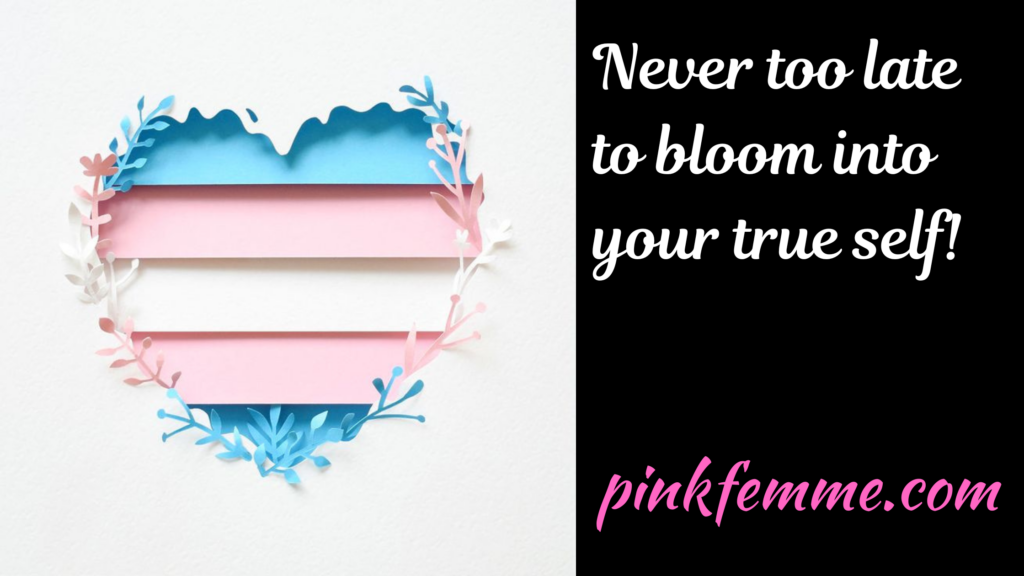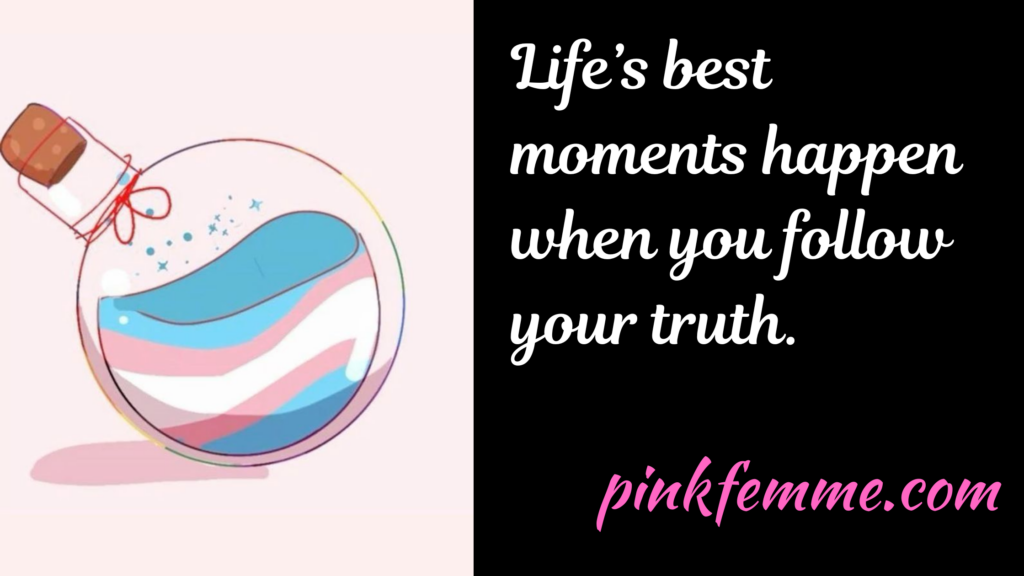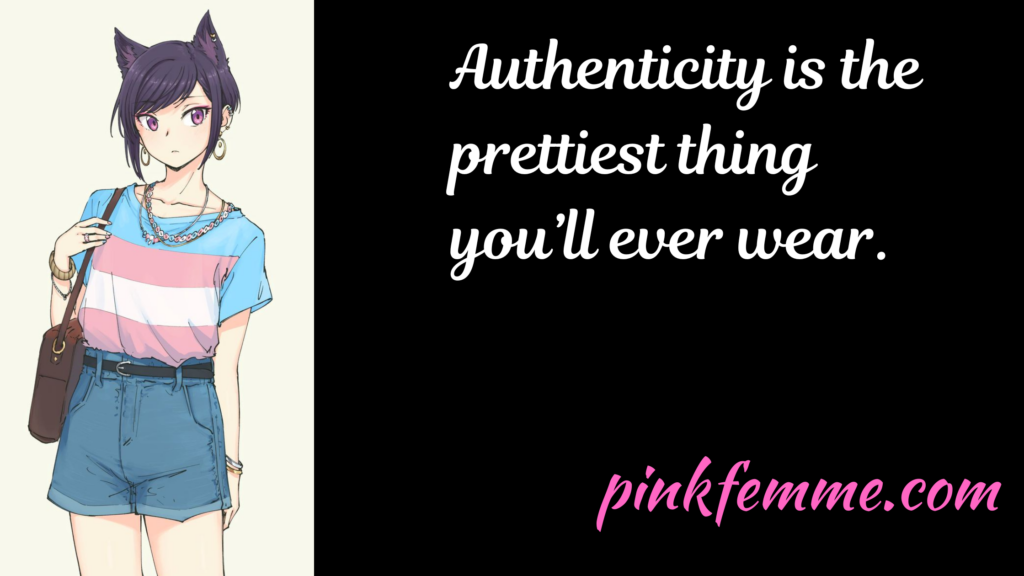
Hey there, beautiful souls. If you’re a trans woman wondering if it’s too late to embrace your true self, let me tell you right now: it’s never too late. Life’s journey is unique for each of us, and discovering your authentic self is always worth it, no matter your age.
It’s never too late for trans women to begin their transition. Whether you’re in your 40s, 50s, or even your 70s, transitioning can lead to a more authentic and fulfilling life. Age brings wisdom and resilience, offering a unique perspective that enriches your journey.
The Unique Beauty of Late Blooming
Embracing Your Timeline
When we talk about late blooming as a trans woman, there’s no definitive age. For some, their 40s feel like the later stages of life; for others, it’s their 70s or beyond. What matters is not the age but the courage it takes to step into your truth. Transition is deeply personal and doesn’t have to follow a linear path. Your journey is yours alone to define.
Stories of Courage at Any Age
I’ve seen women in their 70s and 80s begin to explore their authentic selves. For some, transitioning might mean medical interventions, while for others, it could be about social changes or simply allowing their internal truth to shine outwardly. These examples show that the possibilities are as diverse as the individuals embarking on this journey. Transitioning doesn’t have to be about achieving a specific milestone but about finding joy and peace in living as your true self.
Freedom from Societal Expectations
One of the gifts of transitioning later in life is the ability to break free from societal expectations. By the time many women reach their 40s or beyond, they’ve already navigated numerous life challenges and developed a clearer understanding of what truly matters. This clarity can make the journey of self-discovery all the more profound and rewarding.
Redefining Success on Your Own Terms
Late bloomers have the wisdom to understand that success doesn’t look the same for everyone. Whether it’s feeling comfortable in your own skin, building meaningful relationships, or expressing your femininity in ways that feel authentic, you get to define what success means to you. This self-awareness can be incredibly empowering and liberating.

The Biggest Obstacle: Physical Expectations
Understanding the Pressure of Physical Expectations
For many late bloomers, the most daunting challenge isn’t the logistics of transitioning but rather the expectations tied to physical appearance. Society often places a heavy emphasis on how women are supposed to look, and this can feel like a mountain to climb for anyone transitioning later in life. You may wonder, “Will I ever pass as a woman?” or, “Is it too late for hormones to make a difference?” This kind of self-talk can create an emotional prison, driven by unrealistic standards.
The Role of Media and Idealized Images
Often, these standards are shaped by idealized images of femininity—maybe a celebrity you admire or an internalized vision of your “perfect” feminine self. Social media, movies, and magazines often portray an unattainable version of beauty, setting a bar that feels impossible to reach. While having aspirations is natural, measuring yourself against such benchmarks can keep you stuck.
Shifting the Focus from Perfection to Authenticity
It’s essential to remember that transitioning is not about achieving perfection; it’s about authenticity and joy. The goal is to align your external self with your internal truth, and that doesn’t mean you have to meet anyone else’s standards. Embracing the beauty of who you are—wrinkles, scars, and all—is a powerful act of self-love.
The Impact of Negative Self-Talk
Negative self-talk can become a significant barrier. Thoughts like, “I’ll never look like her,” or “It’s too late for me to change,” can stop progress before it even starts. Recognizing these patterns and challenging them is crucial. Instead of asking, “Why can’t I look like that?” try asking, “How can I celebrate the woman I already am?”
Realistic Goals and the Power of Incremental Change
Setting realistic goals can help alleviate the pressure. Transitioning doesn’t happen overnight, and every small step counts. Whether it’s experimenting with makeup, updating your wardrobe, or starting hormone therapy, each milestone is a celebration of your journey. Incremental changes often lead to profound transformations over time.

The Importance of Internal Alignment
Many trans women who focus solely on physical changes find themselves chasing an unattainable ideal, leading to frustration and even depression. True fulfillment comes from internal integration—embracing your feminine energy, connecting deeply with your authentic self, and nurturing your emotional well-being. This might mean exploring practices like mindfulness or meditation, which can help quiet the noise of external pressures and bring clarity to your inner truth. For some, journaling or talking with a trusted friend or therapist becomes a way to process emotions and uncover the layers of their authentic self. I’ve seen women share how connecting with a supportive community or engaging in creative outlets like art or music helped them feel more aligned internally. These small but impactful steps can bridge the gap between who you are inside and how you present to the world, fostering a sense of peace and completeness.
The True Power of Late Bloomers
Life Experience as a Foundation
Late bloomers have a wealth of life experience to draw from. You’ve navigated personal challenges, built resilience, and cultivated a deep sense of self-awareness. These experiences lay a strong foundation for your transition, providing clarity and focus that younger individuals may still be developing. Your past gives you tools to face the complexities of transition with grace.
The Gift of Emotional Maturity
As a late bloomer, emotional maturity is one of your greatest strengths. You’ve likely learned how to handle difficult emotions, communicate effectively, and navigate relationships with wisdom. These skills are invaluable as you embark on your journey, helping you manage challenges and celebrate triumphs with a balanced perspective.
Adaptability and Perseverance
Transitioning later in life requires adaptability, and late bloomers excel in this area. You’ve already adjusted to various life changes, whether in your career, relationships, or personal growth. This ability to adapt is a powerful asset as you navigate the evolving landscape of your gender journey.

A New Appreciation for Authenticity
With age comes a deeper appreciation for authenticity. Late bloomers understand the importance of living true to themselves, making their transitions not just about physical changes but also about aligning their inner and outer worlds. This alignment often leads to a profound sense of peace and fulfillment.
Inspiring Others Through Your Journey
By stepping into your truth later in life, you become a beacon of hope for others who may feel it’s too late to change. Your courage and determination can inspire people of all ages to embrace their authentic selves, showing that it’s never too late to create a life that feels true and meaningful.
Wisdom: The Late Bloomer’s Secret Weapon
The Strength of Perspective
Wisdom comes with age, and late bloomers have a wealth of perspective that younger individuals often lack. This perspective allows you to make decisions with clarity and confidence, knowing what truly matters to you and what you’re willing to let go of.
Emotional Resilience as a Superpower
Over the years, you’ve weathered countless storms, and this resilience becomes a secret weapon in your transition. Whether facing setbacks or navigating new experiences, you bring an inner strength that helps you persevere. This resilience can also be a source of comfort, reminding you that you’ve overcome challenges before and can do so again.
The Freedom to Redefine Yourself
Later in life, you have the freedom to shed societal expectations and redefine yourself on your own terms. This can feel incredibly liberating, as you’re no longer bound by the pressures that may have weighed on you in your younger years. Instead, you can focus on what brings you joy and fulfillment.

The Power of Adaptability
Adaptability is a hallmark of late bloomers. Life has taught you how to pivot, adjust, and find new paths when needed. This ability to adapt is invaluable during a transition, allowing you to navigate unexpected challenges and embrace opportunities for growth.
Inspiring Others Through Your Journey
Your journey isn’t just about you—it’s about the countless others who will see your courage and be inspired to embark on their own paths. By living authentically, you become a role model, showing others that it’s never too late to pursue their dreams and embrace their true selves.
Closing Thoughts
The Courage to Blossom
If you’ve been holding back because of your age, I hope this article gives you the courage to take that first step. Transitioning is a deeply personal and transformative experience, and no age is the “wrong” age to begin. Your willingness to embrace your truth demonstrates incredible bravery.
Embracing Your Unique Journey
Your journey as a late bloomer is not just valid—it’s extraordinary. Every step you take toward authenticity adds value to your life and inspires others. The beauty of starting later is that you do so with the wisdom, resilience, and clarity that comes from your life experiences. You’re not just transitioning; you’re blossoming in a way that’s uniquely yours.
An Invitation to Take the First Step
Life is too short to let doubts and societal expectations hold you back. Whether it’s a small change like trying a new look or a significant step like starting hormone therapy, each action is a testament to your courage. Take the leap, and remember that you’re not alone—there’s a community of late bloomers who are cheering you on.
So, are you ready to blossom?
If you are looking for more lifestyle-related posts here on Pink Femme, you can find them all here.
Why not expand your knowledge even further by reading another makeup/beauty article here on Pink Femme? You can find them either via the menu at the top of the page or by clicking this link that will take you to the list of all the beauty articles.
When it comes to my choices for makeup and beauty products, I only use L’Oréal Paris (Available on Amazon). I have really sensitive skin and never once have I had any negative reaction to any L’Oréal product.
Keep up to date with all my latest femme news with the fabulous Pink Femme Newsletter. Each Monday you’ll receive an email from me that will include a chapter from the novel that I am currently writing. I will also alert you to interesting information from articles that have not yet been published on Pink Femme. The Pink Femme Newsletter is the only place to see chapters from the novels before they are published. Sign up today: PINK FEMME NEWSLETTER.
References
- American Psychological Association (APA). (2015). Guidelines for Psychological Practice with Transgender and Gender Nonconforming People. American Psychologist, 70(9), 832–864.
- Bockting, W. O., Knudson, G., & Goldberg, J. M. (2006). Counseling and Mental Health Care for Transgender Adults and Loved Ones. International Journal of Transgenderism, 9(3–4), 35–82.
- Coleman, E., et al. (2022). Standards of Care for the Health of Transgender and Gender Diverse People, Version 8. International Journal of Transgender Health, 23(Suppl 1), S1–S259.
- Drescher, J., & Pula, J. (2014). Ethical Issues Raised by the Treatment of Gender-Variant Prepubescent Children. Hastings Center Report, 44(s4), S17–S22.
- Lev, A. I. (2004). Transgender Emergence: Therapeutic Guidelines for Working with Gender-Variant People and Their Families. Routledge.
- Zucker, K. J., & Bradley, S. J. (1995). Gender Identity Disorder and Psychosexual Problems in Children and Adolescents. Guilford Press.
- Ettner, R., Monstrey, S., & Coleman, E. (Eds.). (2007). Principles of Transgender Medicine and Surgery. Routledge.
- James, S. E., et al. (2016). The Report of the 2015 U.S. Transgender Survey. Washington, DC: National Center for Transgender Equality.
- Devor, A. H. (2004). Witnessing and Mirroring: A Fourteen Stage Model of Transsexual Identity Formation. Journal of Gay & Lesbian Psychotherapy, 8(1/2), 41–67.
- Meyer, I. H. (2003). Prejudice, Social Stress, and Mental Health in Lesbian, Gay, and Bisexual Populations: Conceptual Issues and Research Evidence. Psychological Bulletin, 129(5), 674–697.
